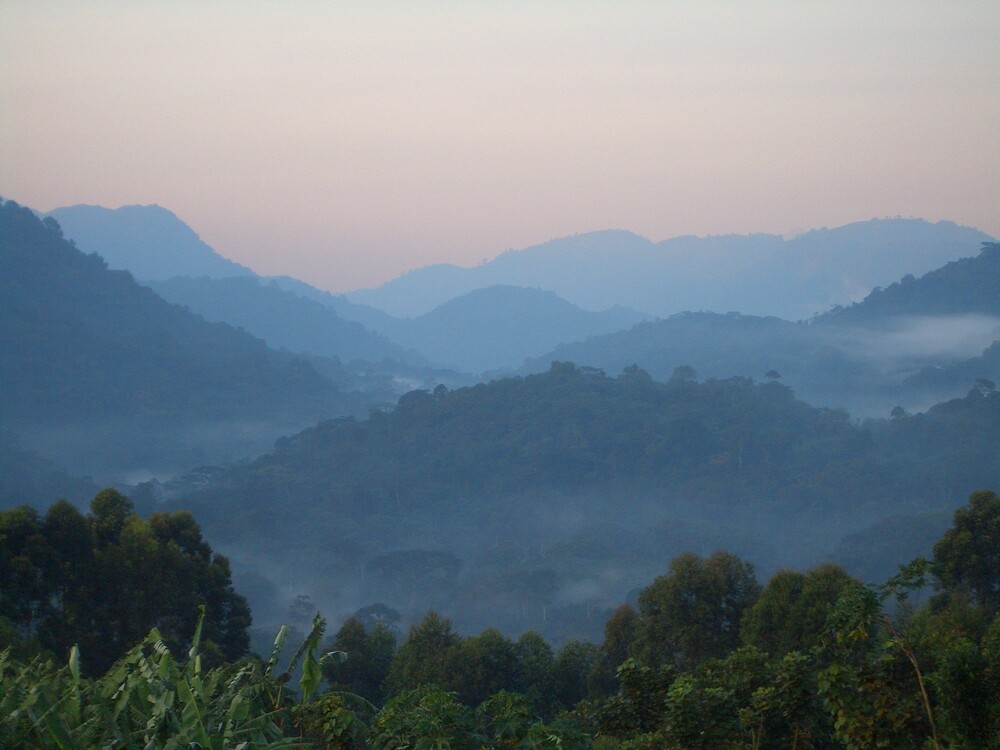

The Tombs of Buganda Kings at Kasubi constitute a site embracing almost 30 ha of hillside within Kampala. Most of the site is agricultural, farmed by traditional methods. The former palace of the Kabakas of Buganda is at its core on the hilltop, built in 1882 and converted into the royal burial ground in 1884. Four royal tombs now lie within the Muzibu Azaala Mpanga, the main building circular and surmounted by a dome. It is a major example of an architectural achievement in organic materials, principally wood, thatch, reed, wattle and daub. However, the site's main significance lies in its intangible values of belief, spirituality, continuity and identity.
Author: Ron Van Oers, Copyright: © UNESCO

The Rwenzori Mountains National Park covers nearly 100,000 ha in western Uganda and comprises the main part of the Rwenzori mountain chain, which includes Africa's third highest peak (Mount Margherita: 5,109 m). The region's glaciers, waterfalls and lakes make it one of Africa's most beautiful alpine areas. The park has many natural habitats of endangered species and a rich and unusual flora comprising, among other species, the giant heather.
Author: Ron Van Oers, Copyright: © UNESCO

Bwindi hosts numerous globally threatened species including high-profile mammals such as mountain gorilla, chimpanzee, l’Hoest’s monkey and African elephant; birds such as African green broadbill, Grauer’s swamp warbler, Turner’s Eremomela, Chapin’s flycatcher and Shelley’s crimson-wing; and butterflies such as African giant swallowtail and Cream-banded swallowtail.
Author: Ron Van Oers, Copyright: © UNESCO
